Fourteen Questions on Power Transmission
Question.1. Name different types of chains.
Answer.
1. Hoisting chains,
2. Conveyor chains,
3. Power transmission chains.
Question.2. What are hoisting chains?
Answer.
The hoisting chains are generally made of plain carbon steel. Their links are round, oval or square in shape. These chains are used for load lifting and block pulley purpose and should conform to the specifications provided in the BIS under code IS: 2429-1970. The oval link chains are used with sprockets which have teeth to receive the links. These chains are used for low speed applications such as chain hoist and anchors for the marine work. Oval link chain does not kink easily.
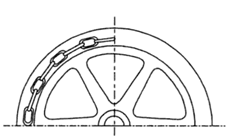
(a)

(b)
Fig.2. Hoisting Chains
Question.3. What are conveyor chains?
Answer.
Conveyor chains may be of detachable or hook joint type fig. (a) or close end pintle type as shown in figure (b). The sprocket teeth are so shaped and spaced that the chain should run onto and off the sprocket smoothly. Conveyor chains are used for low speed agricultural machinery, for handling the materials in mills, mines and factories. The material of the links is usually, malleable cast iron. The motion of the chain is very smooth.
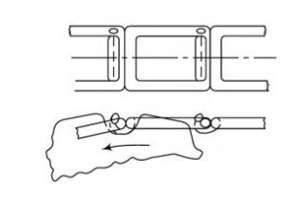
(a)
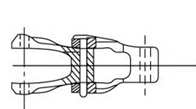
(b)
Fig. Conveyor Chain
Question.4. Name different types of power transmission chains.
Answer.
(i) Block chains,
(ii) Roller chains,
(iii) Silent chains.
Question.5. Define sprocket.
Answer.

Fig.5. Sprocket
Reference: http://ecx.images-amazon.com/images/I/91S2mQ-ThoL.jpg
The chains are fitted on wheels called sprockets. A sprocket has projected teeth which fit into the corresponding recesses in the chain. The chain passes round the sprocket as a series of chordal links.
Question 6. Define pitch of the chain.
Answer.
It is the distance between the hinge centres of two adjacent links. It is denoted by P.

Fig. Pitch of the chain
Question.7. Define gear.
Answer.
A body of circular shape or that of the shape of frustrum of a cone having uniform small width and teeth of uniform formation on its outer circumferential surface is called a gear or toothed gear or toothed wheel.
Question.8. Write the uses of gears.
Answer.
Gears are used in transmission of power. Gears are meshed with other gears in respect of transmitting power as well as for changing the speed, torque and direction of the power transmitting through them. A gear can also mesh with a non rotating toothed part with infinite diameter to convert the rotary motion into translatory motion and vice-versa.
Question.9. What are spur gears?
Answer.
These are usually cylindrical in shape and have straight teeth which are parallel to the axis of rotation.
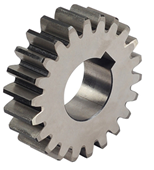
Fig. 9. Spur Gear
Reference http://www.navjivangearsindia.com/images/spur-gear.jpg
Question.10. What are helical gears?
Answer.
In helical gears, teeth are inclined to the axis of the shaft and are in the form of the helix.
Two meshing gears have the same helix angle, but have teeth of opposite hands i.e. a right hand pinion meshes with a left hand gear and a left hand pinion meshes with a right hand gear.
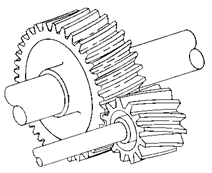
Fig.10. Helical Gear
Reference: http://www.waybuilder.net/sweethaven/MechTech/Automotive/Automotive02/pics/1005_04.gif
Question.11. What are low velocity gears?
Answer.
These gears have peripheral velocity less than 3 m/s.
Question.12. What are medium velocity gears?
Answer.
These gears have peripheral velocity between 3 m/s to 15 m/s.
Question.13. What are high velocity gears?
Answer.
These gears have peripheral velocity more than 15 m/s.
Question.14. What is spur rack?
Answer.
Spur rack is a special case of a spur gear. It has finite pitch diameter. Rack and pinion arrangement is shown in the figure below, which is used to convert the rotary motion into translator motion or vice versa.
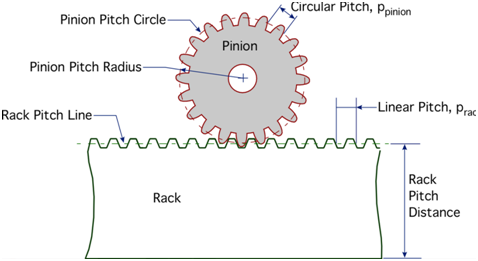
Fig. 14. Rack and pinion arrangement